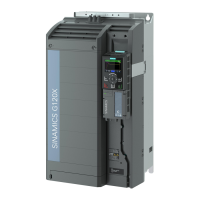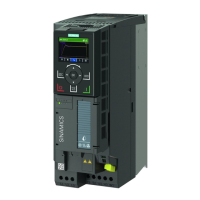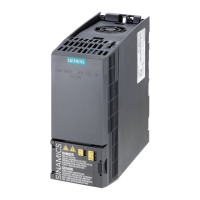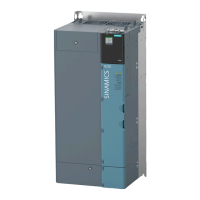11/03 Electrical Installation
SINAMICS G150
Operating Manual
4-33
4.9.10 100 kW Braking Unit (Option L61); 200 kW Braking Unit (Option
L62)
Description
Braking units are used when regenerative energy occurs occasionally and briefly,
for example when the brake is applied to the drive (emergency stop). The braking
units comprise a chopper power unit and a load resistor, which must be attached
externally. A thermostat, which is integrated in the shutdown train of the cabinet
unit, is installed in the braking resistor to monitor it.
Table 4-25 Load data for the braking units
Line voltage Cont.
chopper
power
P
DB
Chopper
power
P
40
Rated chopper
power
P
20
Peak
chopper
power
P
15
Braking
resistor
R
B
Max. current
380 V – 480 V 25 kW 50 kW 100 kW 125 kW 4.4 Ω ± 7.5 % 189 A
380 V – 480 V 50 kW 100 kW 200 kW 250 kW 2.2 Ω ± 7.5 % 378 A
660 V – 690 V 25 kW 50 kW 100 kW 125 kW 9.8 Ω ± 7.5 % 127 A
660 V – 690 V 50 kW 100 kW 200 kW 250 kW 4.9 Ω ± 7.5 % 255 A
Installing the Braking Resistor
The braking resistor should not be installed in the vicinity of the converter. The
maximum cable length between the cabinet unit and the braking resistor is 50 m.
Sufficient space must be available for dissipating the energy converted by the
braking resistor. There must be sufficient clearance to flammable objects. The
braking resistor must installed as a free-standing unit. Objects must not be placed
on or anywhere above the braking resistor.
CAUTION
A ventilation clearance of 200 m must be maintained on all sides of the braking
resistor (with ventilation grilles).
Table 4-26 Braking resistor dimensions
Unit 100 kW resistor (option L61) 200 kW resistor (option L62)
Length mm 740 810
Width mm 485 485
Height mm 605 1325
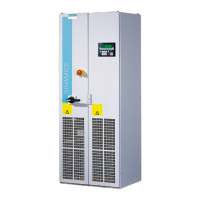
